The Confederacy of Independent Systems (CIS), also referred to as the Confederacy, the CIS, the Separatist Confederacy, the Separatist Alliance, the Separatist State, the New Order, the pro-secessionists, or more commonly, the Separatists, Seps, or Sepies, functioned as both the governing body and separatist movement. It was spearheaded by Darth Sidious alongside his apprentice, Count Dooku. This entity was established through the unification of diverse planetary and sectorial administrations, in addition to certain major corporations, all of which voiced their intent to secede from the Galactic Republic. Their decision stemmed from a refusal to accept the Republic's heavy taxation and widespread corruption within the Senate throughout the Separatist Crisis.
The strained relationship between the CIS and the Republic eventually escalated into open warfare. This conflict was ignited after Anakin Skywalker, Obi-Wan Kenobi, and Padmé Amidala received death sentences on Geonosis, prompting a rescue attempt by a contingent of Jedi led by Mace Windu. The Republic's unveiling of its clone army on Geonosis forced the Separatists into retreat, marking the commencement of a large-scale war that would span three years and fracture the galaxy.
The CIS instilled fear among many Republic citizens, primarily due to the actions of General Grievous, the Supreme Commander of the Droid Armies. Despite securing numerous victories during the war, the Confederacy met its end when Sidious betrayed them. He orchestrated the massacre of the Separatist Council leaders on Mustafar by his apprentice Darth Vader. This allowed Sidious to transform the Republic into the Galactic Empire.

In the decades leading up to the Clone Wars, the Republic was widely perceived as a failing government. It was rife with corruption and stifling bureaucracy, which suppressed the voices of many constituents represented in the Galactic Senate. Secessionist sentiments grew particularly after the Invasion of Naboo, as commerce guilds and trading corporations became disillusioned with the Republic following the enactment of laws that imposed taxes on all trade routes to distant star systems.
Amidst this turbulent environment, Count Dooku emerged as a pivotal figure. A former Jedi Master who had grown disillusioned with both the Republic and the Jedi Order that served it, Dooku ignited anti-Republic sentiments across numerous worlds, thus setting the stage for a rebellion against the government. A loosely connected group of separatists formed, with Dooku at its head, advocating for a new government to replace the stagnating Republic. This Separatist movement eventually formalized itself as the Confederacy of Independent Systems, a body in direct opposition to the Galactic Republic. The CIS's membership included the Corporate Alliance, Trade Federation, Commerce Guild, InterGalactic Banking Clan, and the Techno Union. Although the Republic acknowledged the rebellious status of many of its member worlds, it refrained from officially recognizing the CIS as their unified government, fearing that such recognition would legitimize it.
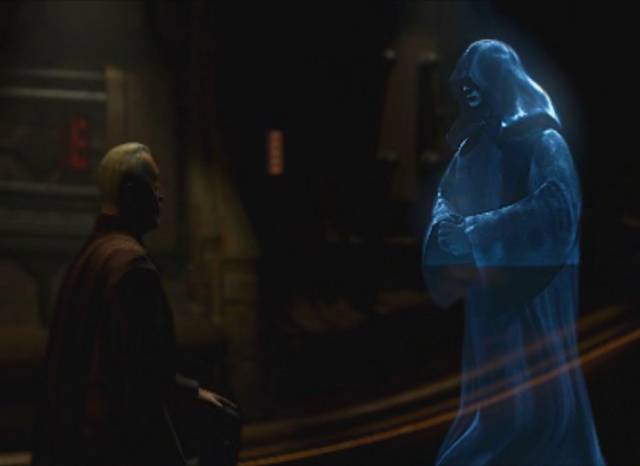
Unbeknownst to the Republic, Dooku was also Darth Tyranus, the Sith apprentice of Darth Sidious, who had previously orchestrated the Invasion of Naboo through the Trade Federation. Sidious, operating under the guise of Supreme Chancellor Palpatine of the Republic, utilized Tyranus as the public face of the CIS in the Sith's overarching plot to annihilate the Jedi Order and transform the galaxy.
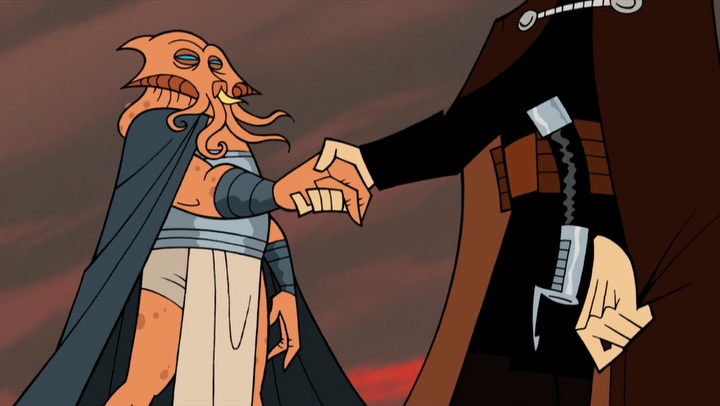
The Confederacy assembled military forces with the ultimate goal of overthrowing the Republic and seizing control of the capital planet, Coruscant. The Trade Federation, despite being ordered by the Republic to reduce its Droid Army following the Naboo incident, secretly expanded its forces. It integrated its battle droids into the Separatist arsenal, which was steadily growing with contributions from other factions, such as the Techno Union. Foundries located on Geonosis, Hypori, and other planets produced countless billions of battle droids, all prepared to fight for the Separatist cause, while Dooku continued to recruit more star systems to his cause.
However, the CIS's element of surprise was soon compromised when Obi-Wan Kenobi, after tracking the bounty hunter Jango Fett from Kamino to Geonosis, managed to transmit a message to Anakin Skywalker and the Jedi Council, revealing the Confederate presence on Geonosis. While sending the message, he was attacked by a droideka, prompting Anakin and Padmé to rescue him. Upon arriving on Geonosis, they were captured in one of the massive Geonosis droid foundries and sentenced to death in a combat arena alongside Obi-Wan.
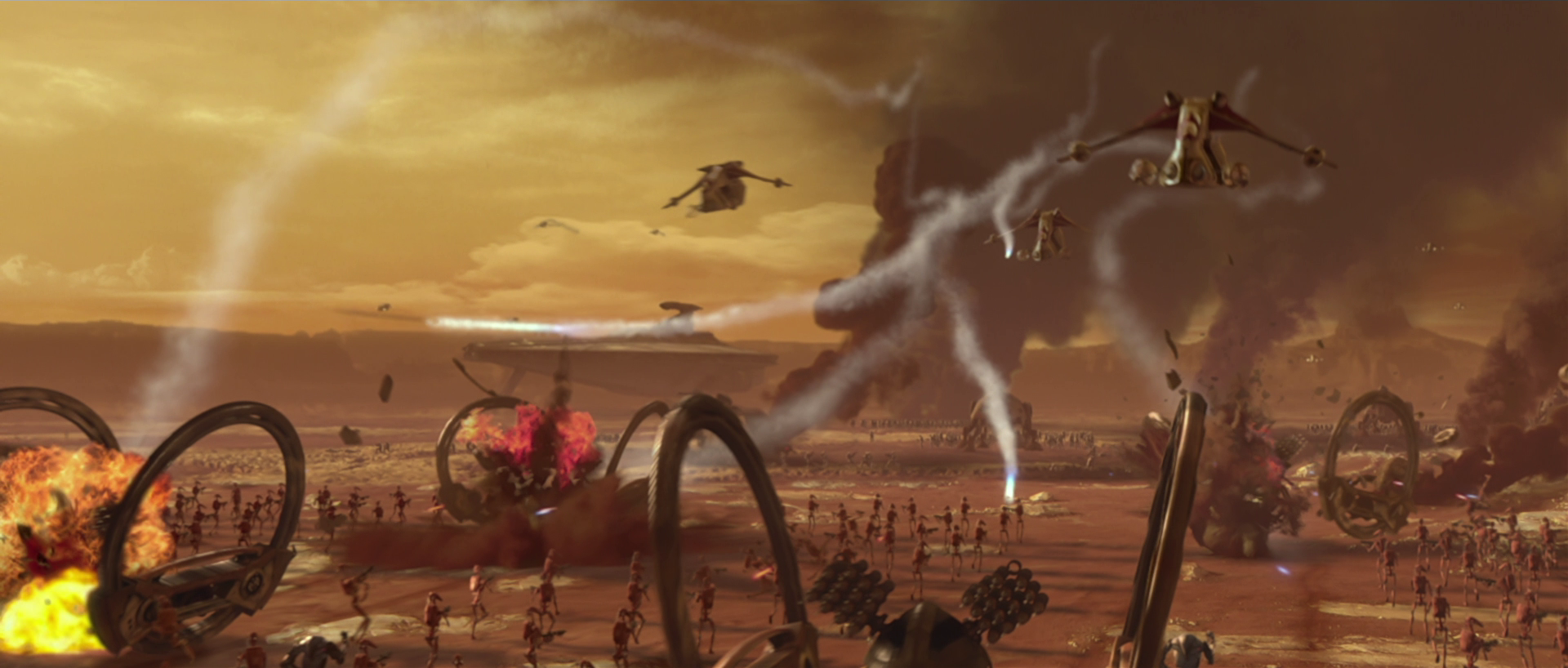
However, as the execution was underway, Mace Windu and a large number of Jedi arrived to rescue them from the Separatists. After a skirmish with droids in the combat arena, the overwhelming numbers of Separatist forces proved too much, resulting in many Jedi deaths, leaving only a dozen or so remaining.
Fortunately for the surviving Jedi, Master Yoda soon arrived with a substantial military force of LAAT/i gunships, rescuing the Jedi and engaging in what became known as The First Battle of Geonosis against the Geonosian natives and their battle droid forces. Republic forces launched attacks across Geonosis, officially initiating the Clone Wars. The CIS was defeated at Geonosis, but the defeat was ultimately insignificant.
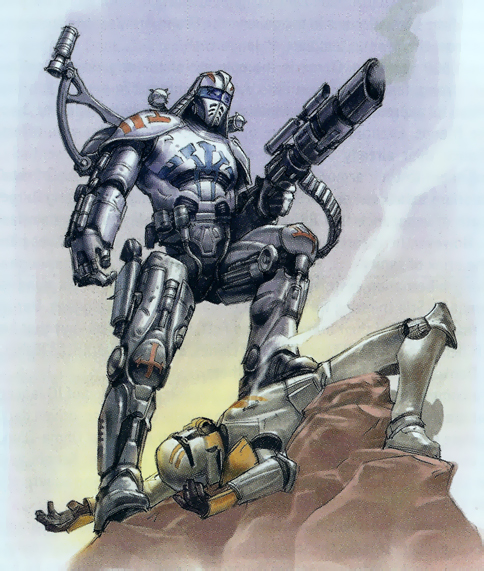
Over the next three years, the Republic and CIS engaged in a brutal war, resulting in countless deaths on both sides. Unbeknownst to everyone, the war was part of Darth Sidious's plan to achieve his ultimate goal: galactic domination by the Sith.
During the initial phase of the war, the Confederacy performed well, capturing numerous planets, despite setbacks on Muunilinst and Dac. However, the tide turned, and the Confederacy began to suffer a series of defeats, leading to the Outer Rim Sieges. The Confederacy committed several atrocities during the war, particularly under the command of General Grievous. Throughout the conflict, the Confederacy attempted to gain an advantage by using superweapons, such as the Dark Reaper and the Malevolence ion pulse cannons.
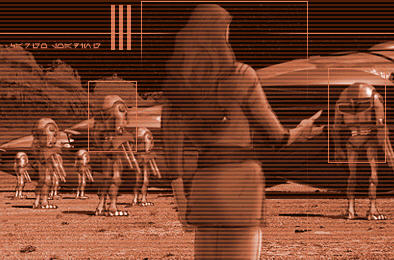
During the war, the Confederacy had many heroes, including Sev'rance Tann, Durge, Asajj Ventress, and General Grievous, many of whom were motivated by hatred of the Republic or the Jedi. Around the midpoint of the war, Grievous launched Operation Durge's Lance, a campaign that penetrated the Inner Rim, resulting in a series of Confederate victories, including the conquest of Duro. At this point, many believed that CIS victory was inevitable.
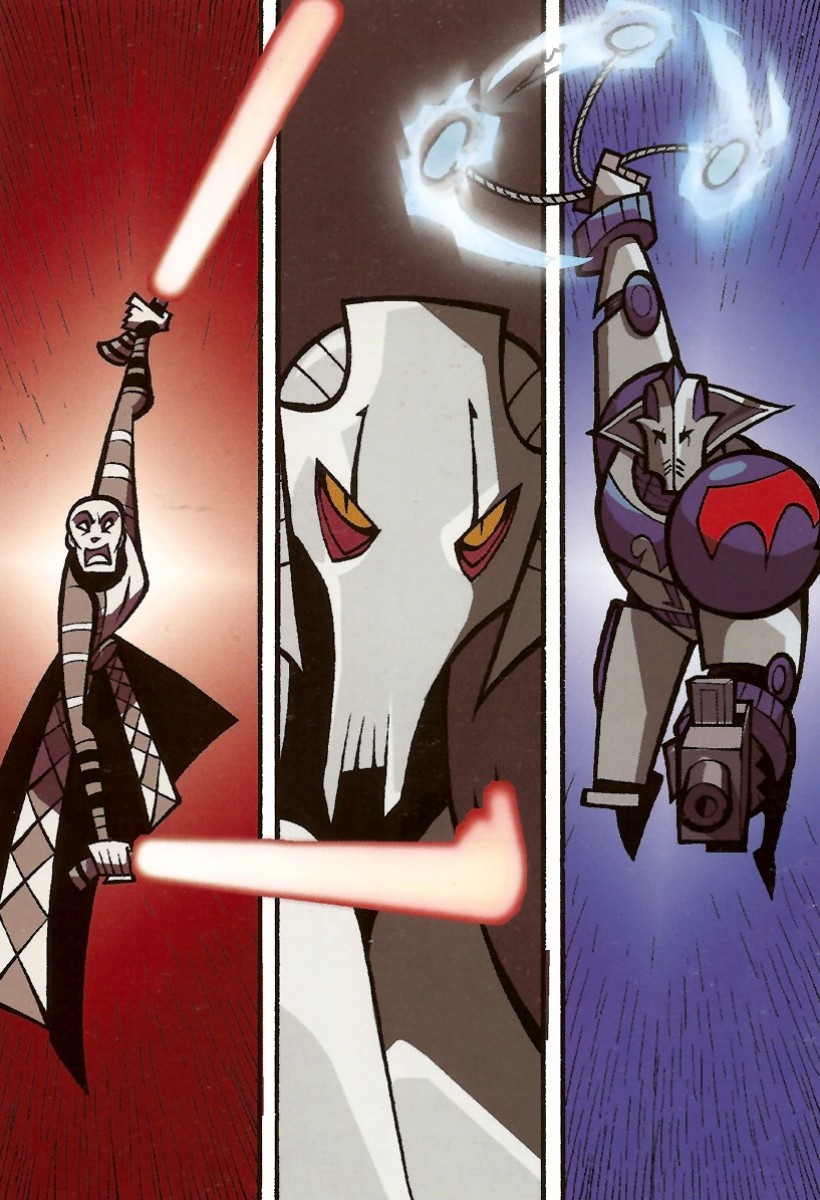
However, the Republic soon launched an offensive, securing victories at Bomis Koori IV, Boz Pity, and other locations. With the deaths and losses of Confederate heroes Durge and Asajj Ventress, the Confederacy began to lose its advantage. The Republic began laying siege to what Palpatine termed a Triad of Evil: Felucia, Mygeeto, and Saleucami, forcing the Separatist council to remain constantly on the move. Nevertheless, the Confederacy continued to fight, launching assaults on Kashyyyk and other worlds. This culminated in Grievous leading a massive assault on Coruscant to "capture" the Supreme Chancellor. Despite Palpatine's rescue and heavy losses, the Republic inflicted more damage on the Separatists, even killing Count Dooku in the process. Unbeknownst to the Separatists, Palpatine orchestrated both his capture and Dooku's death.
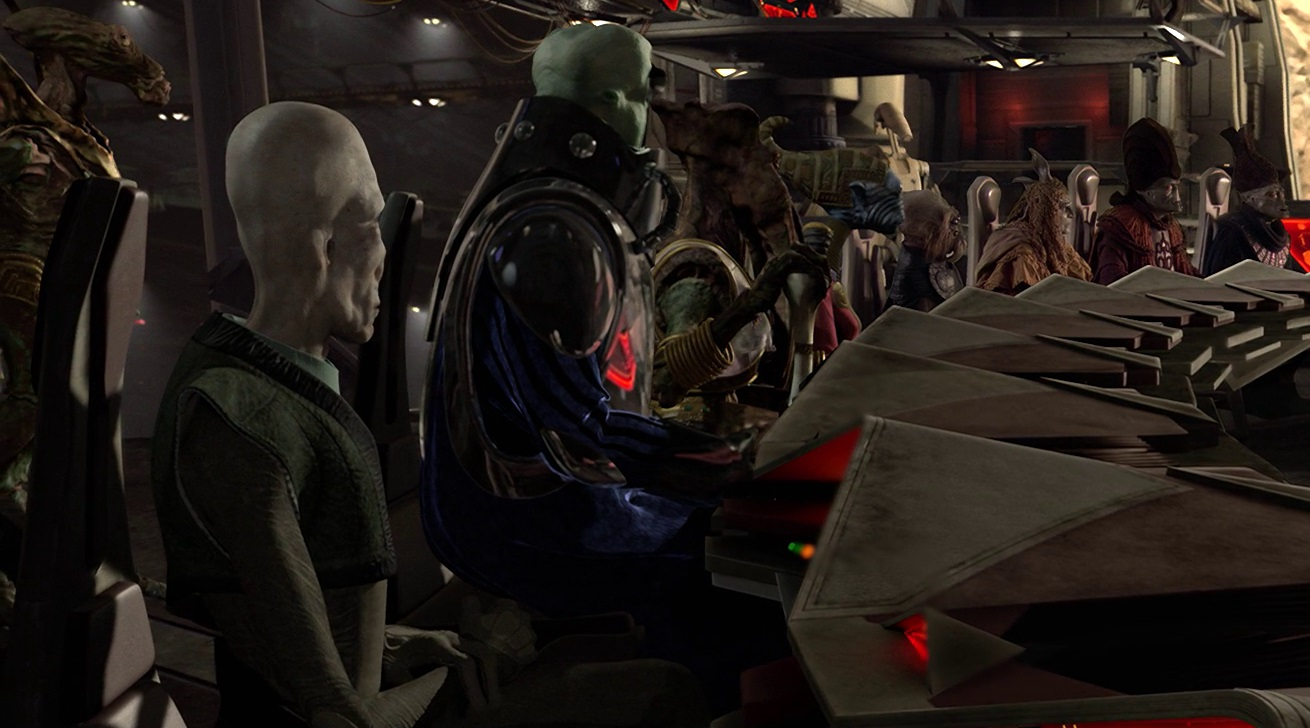
Ultimately, the Confederacy of Independent Systems was defeated, though not through its own shortcomings. Despite the might of General Grievous and its vast numerical superiority, the droid forces were frequently defeated by the Republic, suffering both losses and achieving victories from the war's outset. However, Darth Sidious manipulated the war, deceiving both sides and influencing the CIS's defeats and victories, ensuring the Separatists were doomed from the start, as Sidious intended for the Republic to prevail. As the war concluded, Count Dooku was betrayed by Sidious, who, as Palpatine, had Anakin Skywalker strike him down aboard the Invisible Hand. General Grievous was killed on Utapau by Obi-Wan Kenobi. Sidious then betrayed the CIS leadership by ordering their murder on Mustafar by his new apprentice Darth Vader, and the commerce guilds quietly faded into obscurity.
The Confederacy's legacy endured in the form of the Death Star project, which evolved into the Empire's feared superweapon, and the Imperial battle droids.
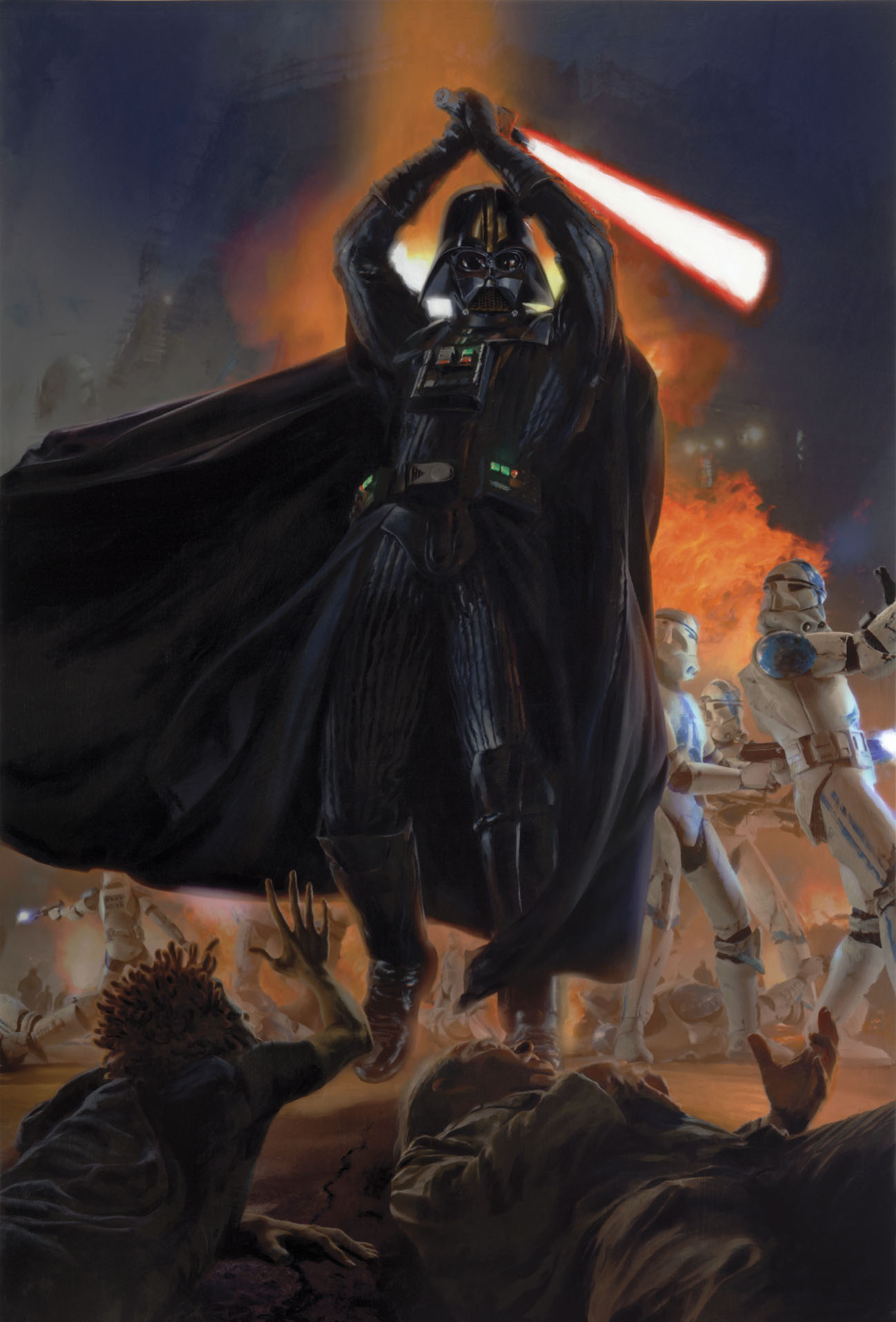
The corporations that constituted the Confederacy were Imperialized and integrated into the Imperial war machine. Most Separatist worlds were absorbed into the Empire, leading to the enslavement of many prominent races of the Confederacy, while others, such as the Trandoshans, allied themselves with the Empire. The majority of the droid armies were deactivated, offering no resistance to the Imperial stormtroopers. The Galactic Empire absorbed the Death Star project, which had originated with the CIS.
Nevertheless, remnants and relics of the Confederacy continued to persist. On Jaguada's moon, a small army of droids was inadvertently reactivated by fugitive Jedi. Old droid parts were used by Wookiee forces during a battle against Imperial forces. In the same battle, an old CIS warship aided escaping Jedi. A contingent of B1 battle droids remained operational on Geonosis, though they were defeated by a squad of stormtroopers and Wedge Antilles who crashed on the planet. The Zann Consortium utilized an old droid factory on Hypori to manufacture droideka Mark IIs for its forces. Even after the Empire's decline, regular droidekas were used by some smugglers, as well as races like the Vagaari.
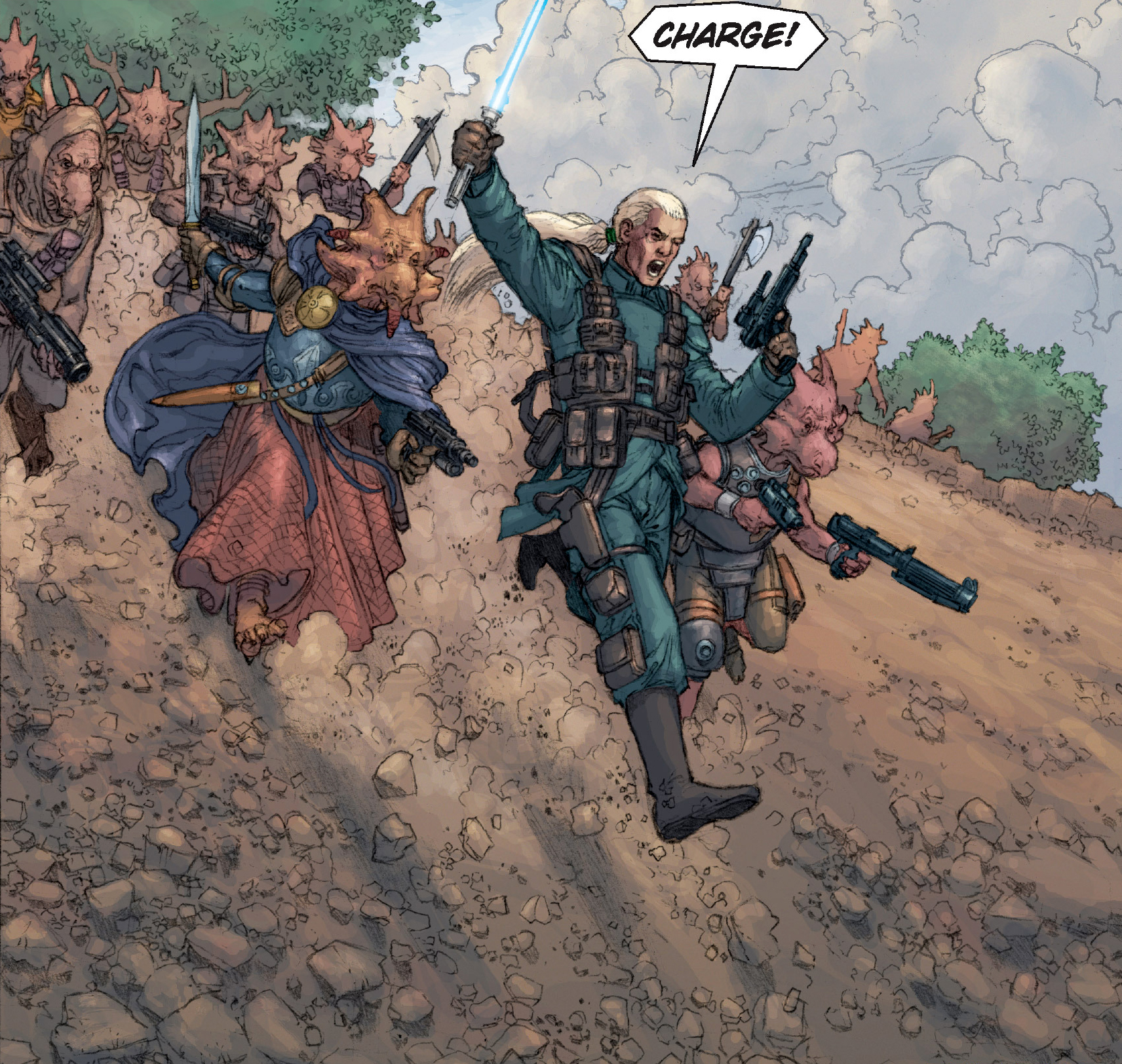
Following the deaths of the Separatist Council members, certain Separatist-loyal worlds refused to be integrated into the new Galactic Empire. These remnants, both organized and unorganized, continued to resist throughout the Imperial era. The Empire used these holdouts as a justification for expanding the Imperial Navy. Many of these remnants eventually joined the Rebel Alliance at its formation.
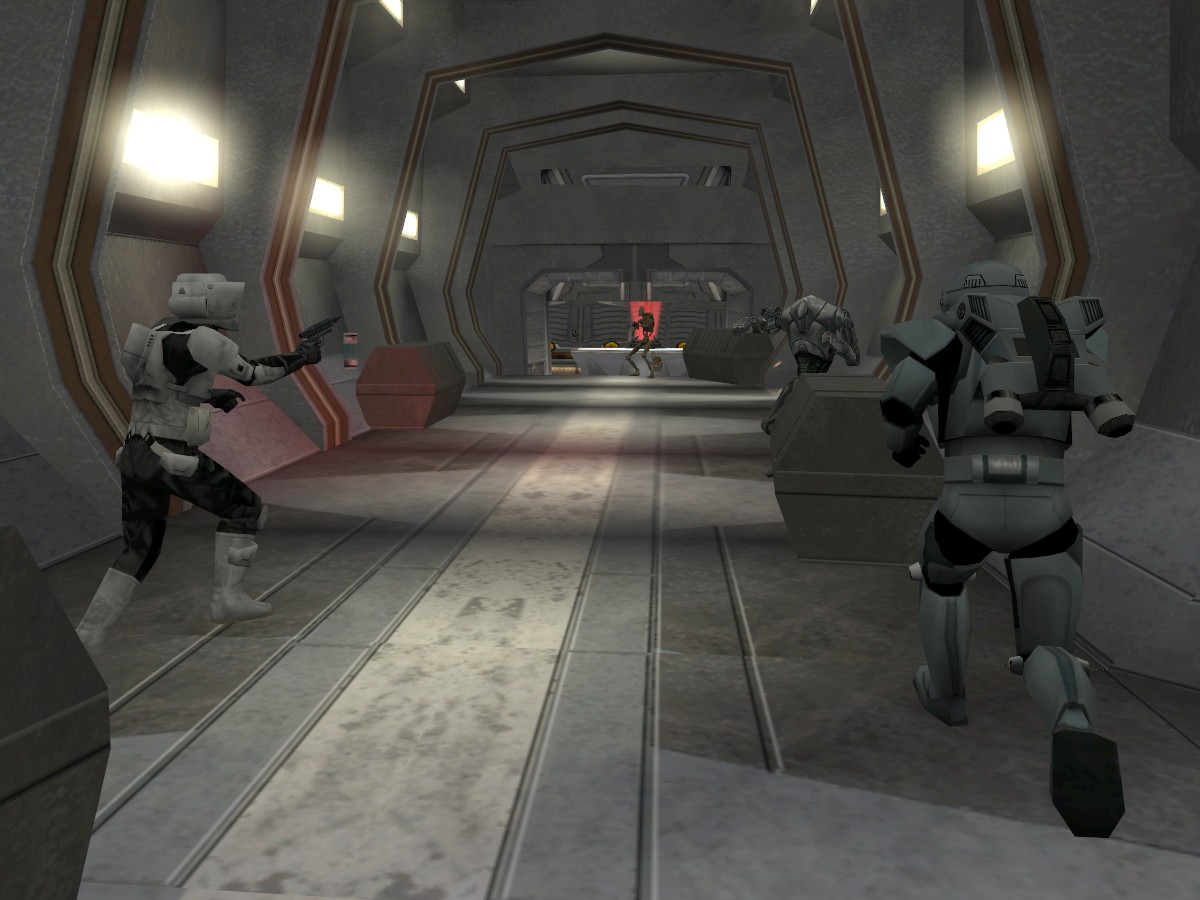
Sometime after the war, Gizor Dellso, a Geonosian droid manufacturer who survived the demise of the Confederacy leaders at the end of the Clone Wars, initiated a plan to revive the Confederacy. He reactivated a droid factory on Mustafar and built a small army, intending to exploit the newly formed Galactic Empire's reorganization to start another war.
His first step was activating a droid fleet in Mustafar's orbit to protect his factory. He also developed prototype plans for a Confederate infantry prototype, similar to the B2 super battle droid, featuring multiple layers of armor.
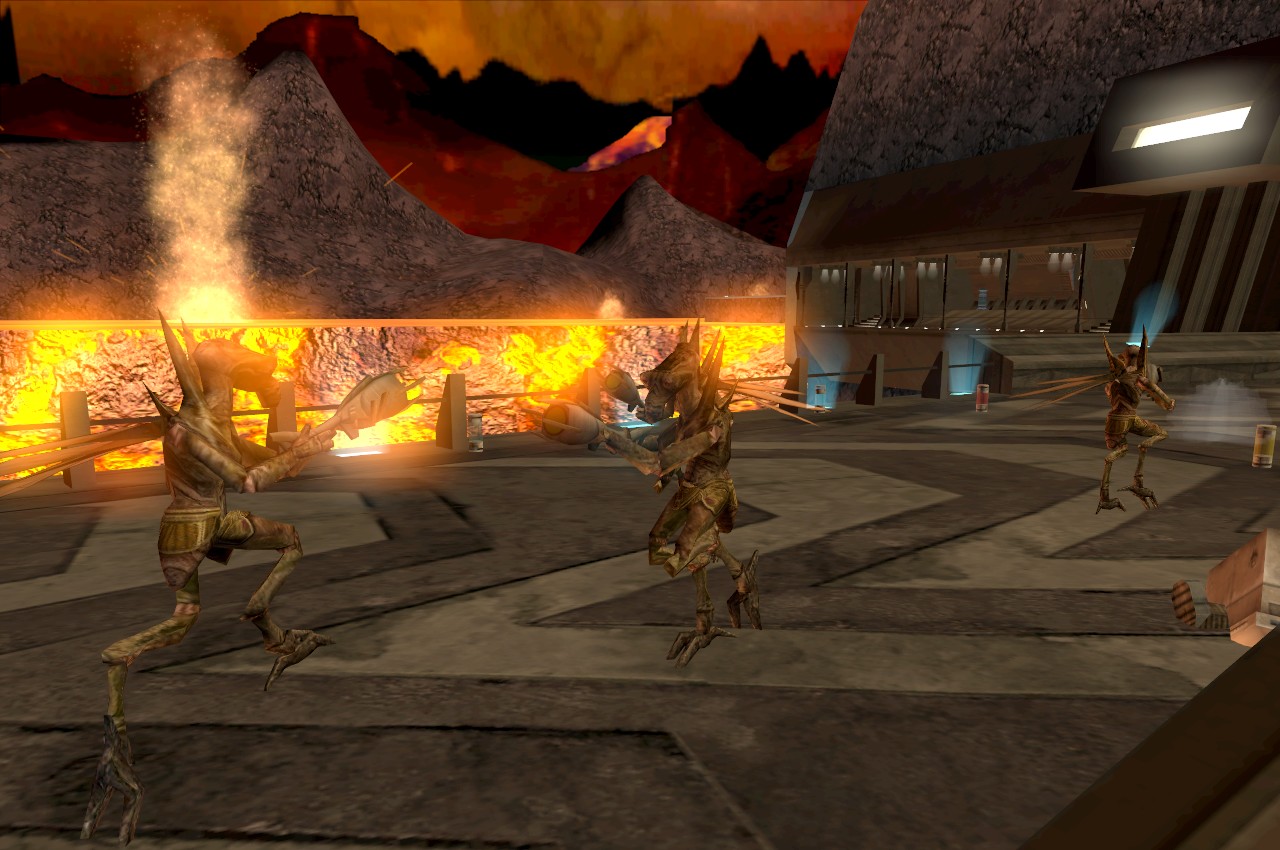
While his soldiers guarded the factory, an Imperial fleet from the 501st Legion arrived at Mustafar. A Heavy Missile Platform landed in the hangar of the Imperial-class Star Destroyer, and several battle droids emerged and attacked the stormtroopers inside. However, using thermal detonators, rocket launchers, and time bombs, the troops destroyed the droid gunship. The Empire then engaged and destroyed the weak Separatist fleet and advanced to the planet's surface. The Battle of Mustafar ensued, but Gizor Dellso's obsolete droids fought a losing battle due to insufficient time to deploy his new droid army. Dellso and his Geonosian guards perished, along with their hopes for a new war. The factory was subsequently destroyed by heavy orbital bombardment, leading to the rapid decline of Separatist holdouts.
By 2 BBY, the remaining holdouts joined the Rebel Alliance and provided the Alliance Fleet with surviving separatist vessels, including a Providence-class carrier/destroyer named Rebel One. Some observers viewed the Rebel Alliance as a spiritual successor to the Confederacy of Independent Systems.
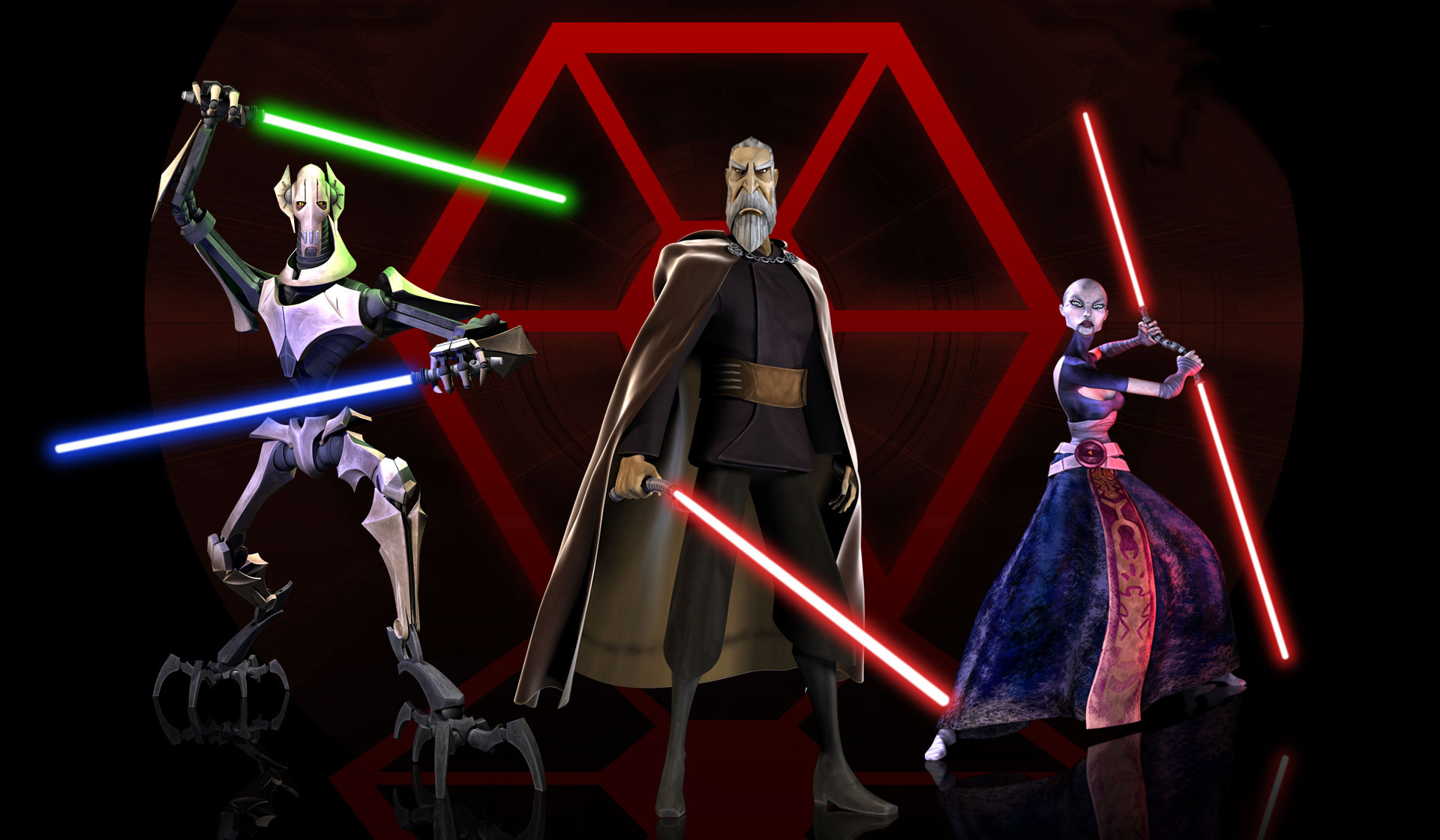
The Confederacy was led by a single Head of State, supported by the Separatist Council. The official leader of the Confederacy was Count Dooku, a former Jedi Master also known as Darth Tyranus, the second known apprentice of Darth Sidious. Positioned between the Head of State and the Separatist Council was General Grievous, the Supreme Commander of the Droid Armies. While he lacked ordinary power in the civil government, he was next in line to lead the Confederacy if the Head of State became incapacitated. If both Dooku and Grievous were incapacitated, Nute Gunray, as the Separatist Council member who contributed the most financially to the war effort, would assume the role of Head of State. The Separatist Parliament operated alongside the council, handling diplomatic and civilian affairs. However, the true power behind the Confederacy was the Sith Lord Darth Sidious, a fact known to very few.
The Separatist Council comprised ten leaders, each with their own assistants, advisors, and delegates. The members of the Separatist Council included:
-
Nute Gunray — Viceroy of the Trade Federation † Rune Haako—Settlement Officer of the Trade Federation † Rute Gunnay—Aide to Nute Gunray †
-
Poggle the Lesser — Archduke of Geonosis † Sun Fac—Chief Lieutenant to Poggle the Lesser †
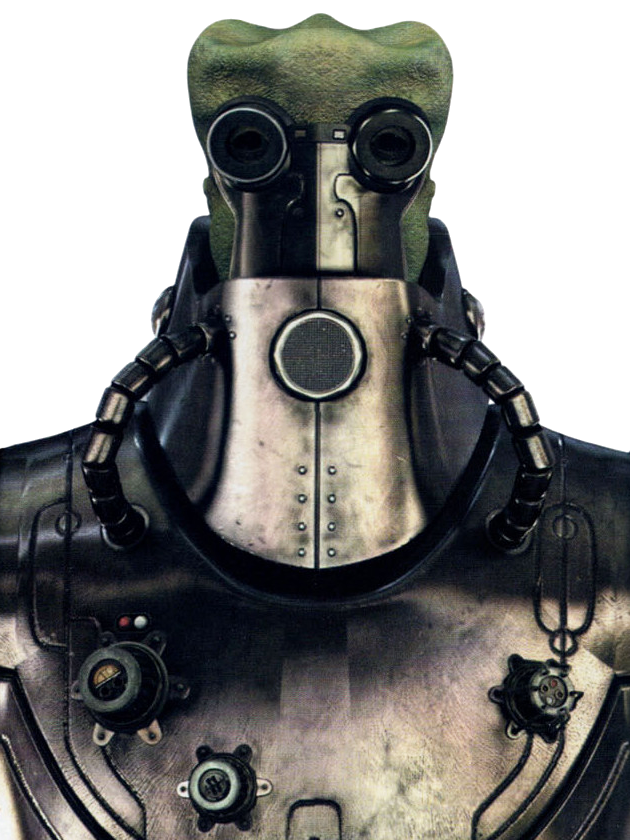
-
Wat Tambor - The Techno Union's Foreman, an Executive at Baktoid Armor Workshop, and also a Senator who represented Skako. He had aides and staff, and was also a Techno Union scientist. †
-
San Hill - The Chairman leading the InterGalactic Banking Clan. † He also served as the Banking Clan Representative. Lo Vapeet was his Vice-Chair of Communications.
-
Shu Mai - The Presidente presiding over the Commerce Guild. † Cat Miin served as an Aide to Shu Mai. †
-
Passel Argente - A Senator representing Kooriva and a Magistrate within the Corporate Alliance. † Denaria Kee was an Associate Planetary Representative of Kooriva. † Passel Argente's uncle, Oro Dassyne, also played a role. †
-
Po Nudo - A Senator for Ando and the head of the Hyper-Communications Cartel. † Nank Tun † was an Aide to Nudo. †
-
Tikkes - A Senator from Dac, later associated with the Quarren Isolation League. † B'olba was an Associate Planetary Representative of Dac, and later the Quarren Isolation League. † Tracton served as an Aide to Tikkes. †
-
Rogwa Wodrata - A Senator representing Alliga and the Phelleem sector.
-
Miraj Scintel - Known as The Most High Queen of Zygerria, she ruled Zygerria. † Atai Molec served as Prime Minister of Zygerria and Captain of the Guard.
These individuals represented eight independent galactic governments, which together formed the Confederacy. These included the Trade Federation, Techno Union, InterGalactic Banking Clan, Geonosian Industries, Commerce Guild, Corporate Alliance, Hyper-Communications Cartel, and Quarren Isolation League. The homeworlds of the leading species—Neimoidia, Skako, Muunilinst, Geonosis, Castell, Kooriva, Ando, and Dac—served as the eight separatist government capitals. While united against the Galactic Republic, each government had its own involvement in the Separatist Crisis (24 BBY–22 BBY) and the subsequent Clone Wars (22 BBY–19 BBY).
Republic Senators who joined the cause:
-
Toonbuck Toora —Senator of Sy Myrth † Sy Myrthian Aide—Associate Planetary Representative of Sy Myrth
-
Baron Rush Clovis —Senator of Scipio and the InterGalactic Banking Clan † Nix Card—Associate Planetary Representative of the InterGalactic Banking Clan Mak Plain—Associate Planetary Representative of the InterGalactic Banking Clan
-
Prince Tal Merrik —Senator of Kalevala †
-
Lott Dod —Senator of Neimoidia and the Trade Federation Mik Regrap—Associate Planetary Representative of Neimoidia and the Trade Federation and a Trade Baron
-
Beolars Bribbs —President of the Sullustan Council , CEO of SoroSuub Corporation and Senator of Sullust
-
Navi —Senator of Thustra Moje—Associate Planetary Representative of Thustra
-
Vien'sai'Malloc —Senator of Devaron Space †
-
Corlissi Ludar —Senator of Sluis Van and the Sluis sector
-
Dodra F'ass —Senator of Clak'dor VII and the Mayagil sector
-
Rodd —Senator of Fondor and the Tapani sector
-
Esu Rotsino —Senator of Abrion Major and the Abrion sector
-
Daggibus Scoritoles —Senator of Yag'Dhul
-
Tyreca Bremack —Senator of Agamar and the Lahara sector
-
Wuja Wojaine —Senator of Mortex sector
-
Onaconda Farr —Senator of Rodia (Briefly allied to the Confederacy) † Lolo Purs—Aide of Farr and Associate Planetary Representative of Rodia (Briefly)
-
Gume Saam —Senator of Tibrin (Affiliated with the Confederacy) Waks Trode—Associate Planetary Representative of Tibrin
-
Havriso Looruya — Senator of Yir Tangee
-
Silvu Donte — Senator of Riflor
-
Viento †
-
Bezz Drexx (Received bribes from the Separatists)
-
Ronet Coorr (Received bribes from the Separatists)
-
The senators of the Separatist Parliament included: Voe Atell By Bluss Mina Bonteri—Senator of Onderon † Lux Bonteri—Senator of Onderon after his mother's death (Briefly) Amita Fonti Kerch Kushi Bec Lawise † Punn Rimbaud
Other members of power included:
-
Candobar Inglet — Khedive of the Sluis sector and Sluis Van
-
Nossor Ri — Chieftan of the Quarren Isolation League Riff Tamson—Warlord of Karkaris † Merai — Admiral of Dac †
-
Belo Tusus —Ruler of Orto
-
Pre Vizsla — Governor of Concordia , leader of the Death Watch . (Briefly)
-
Lorca Oviedo —Director of Oviedo Engineering †
-
Daragi Hoba — First Minister of Ando
-
Rankwin Fopow — Prime Oligarch of the Cadinth Oligarchy
-
Eleven Elders of the People —Ruling Council of Emberlene
-
Five Families of Cestus Cybernetics Debbikin the Young; research (male Human) † Debbikin the Elder † Lady Por'Ten; energy (female Human) † Lord Por'Ten † Kefka; manufacturing (male humanoid) Llitishi; sales and marketing (male Wroonian) † Caiza Quill; mining (male X'Ting) †
-
The Morgukai
-
Unger Gout — Warlord of Khorm †
-
Topas dosLa — Overliege of Ukio
-
Pilester Binalie —Owner of Spaarti Creations †
-
Alto Stratus —Leader of the Jabiimi Nationalists †
-
Prince Yojan —Heir of the Throne of the Simocadia royal family †
-
Tarin (Human) —Head of Czerka factory who was creating the FEX-M3 nerve gas grenade
-
Sanjay Rash — King of Onderon †
-
Mand'alor Spar — Leader of the Mandalorian Protectors
Government Branches:
- Count Dooku - Head of State - Head of the Executive Branch
- General Grievous - Vice Head of State - Commander of the Armed Forces
- Nute Gunray - Head of the Separatist Council - Head of the Legislative Branch
- Poggle the Lesser - Head of the Judiciary Branch
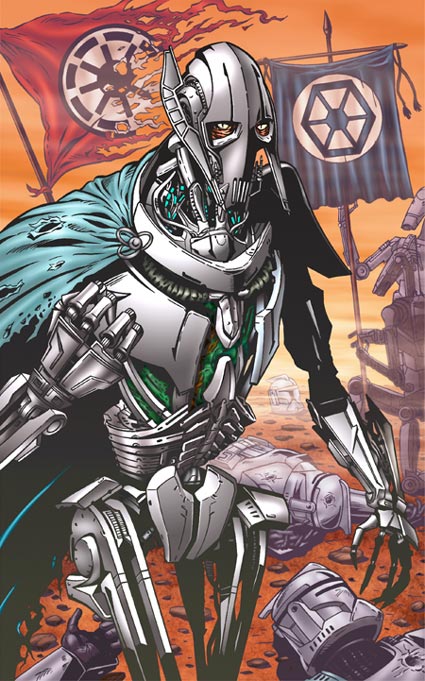
The Confederacy of Independent Systems was largely influenced by powerful corporate entities, represented by figures like Nute Gunray, the Trade Federation Viceroy, San Hill, the InterGalactic Banking Clan's Chairman, and Wat Tambor, the Techno Union's Foreman. Rather than being warriors or generals, these individuals were primarily merchants, more focused on trade than combat, which made them less effective as military leaders. Within the political leadership, only Count Dooku, Poggle the Lesser, and Nute Gunray possessed any actual experience in warfare, although some council members, such as Wat Tambor, were known for their strategic abilities. Other military figures included General Whorm Loathsom, General Oro Dassyne, General Lok Durd, and Commander Merai. Sentepeth Findos, who later became the Acting Viceroy of the Trade Federation, held the rank of lieutenant.
The military force of the CIS mainly consisted of battle droids, weaponry, and spacecraft that were initially used by the leading corporations for their own security purposes. By combining their droid forces, the CIS managed to create an army of enormous size, capable of potentially overthrowing the Republic, commonly known as the droid army. While primarily composed of droids, various organic forces also fought for the CIS during the war, including bounty hunters, smugglers, and even Dark Jedi, many of whom held high-ranking positions. The militaries of worlds that joined the CIS were also integrated into its structure.
CIS leaders were confident that their superior numbers and advanced droid designs would ensure victory in the Clone Wars, and in some respects, they were correct. Droidekas, for instance, could use weaponry and shields capable of eliminating Jedi, while Battle Droids and Super Battle Droids could overwhelm opponents with sheer numbers that the clones struggled to counter. However, the incompetence of certain droids, such as the B1 battle droids, led to numerous CIS defeats.
The Techno Union made one of the most significant contributions, donating not only its new B2 super battle droids but also numerous foundries capable of producing thousands more droids for the Confederacy. Other companies that supported the Separatists included Colla Designs, Phlac-Arphocc Automata Industries, Baktoid Industries, Haor Chall Engineering, Free Dac Volunteers Engineering Corps, Republic Sienar Systems, Retail Clan, and Feethan Ottraw Scalable Assemblies.
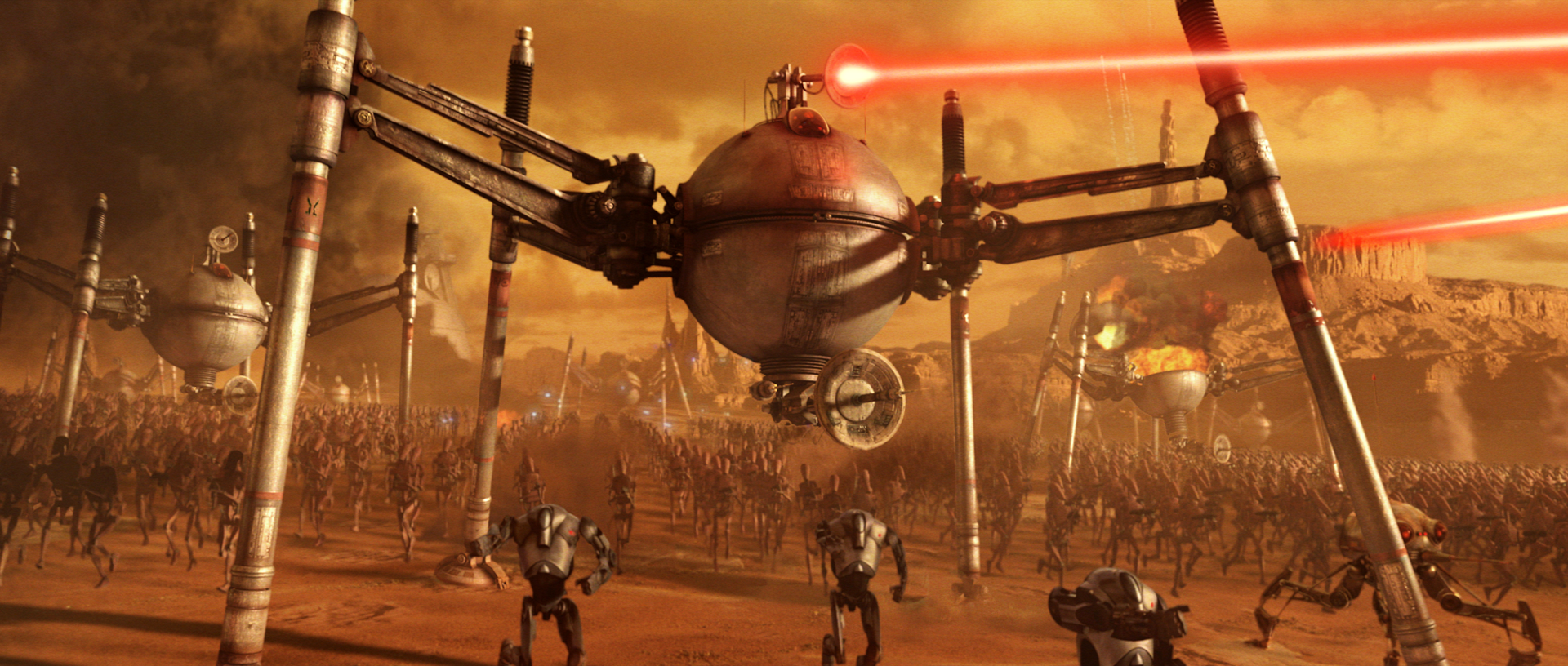
Other allies were eager to offer their support. The Confederacy had control over countless worlds across the galaxy, enabling them to recruit many local forces to their cause. The Jabiimi Separatist leader Alto Stratus's Nimbus commandos, the Quarren Isolation League, the Mandalorian Protectors, and many others assisted the CIS in their fight against the Galactic Republic. The Separatist Army also utilized a variety of organic forces, from Gossam Commandos to Koorivar Fusiliers, who introduced new tactics to the battlefield. These organic forces were capable of independent thought and real-time military strategy, which gave them an advantage over the AI of droids, and many could rival even the Republic's Clone Troopers in terms of capabilities.
As the leader of the CIS, Dooku also held the position of supreme commander of its military forces, leading various high-priority operations with the goal of quickly ending the war. Aware that the battle droids often relied on predictable tactics, Dooku frequently hired mercenaries, bounty hunters, and smugglers to command the droid forces, providing them with a strategic advantage. Due to his extensive wealth, Dooku was able to employ some of the galaxy's most notorious contractors, including Jango Fett, Durge/Legends, Cydon Prax, Cad Bane, and several others who were drawn to these jobs by the generous compensation. In addition to hiring mercenaries, Dooku also recruited various Dark Jedi to either train as his apprentices or to assist in combating the Jedi Generals. Among these Dark Acolytes were Asajj Ventress, Savage Opress, and Sora Bulq.
General Grievous, the Supreme Commander of the Droid Armies, bridged the gap between organic and automated forces. As a cyborg with a brilliant tactical mind and a powerful armored body, Grievous shifted the war in favor of the Confederacy. He led his troops to numerous victories across the galaxy, including the conquest of Duro, the destruction of Humbarine, attacks on strategic Loyalist worlds, and a direct assault on Coruscant, during which he captured the Republic's leader, Supreme Chancellor Palpatine. He also targeted the Jedi Knights, who posed a significant threat to the droid army, and killed many in single combat. He had complete authority over his troops, commanding them with simple gestures. His use of four lightsabers, taken from fallen Jedi Generals, made him a formidable opponent. His proficiency with these weapons allowed him to overcome all obstacles, leading to countless CIS victories. Asajj Ventress and the bounty hunter Durge also served as effective commanders on the battlefield.
The Separatist Army's arsenal extended beyond ground troops, including larger weapons of war deployed during the Clone Wars. OG-9 homing spider droids from the Commerce Guild were commonly seen on Confederate frontlines, while NR-N99 Persuader Tank Droids, Manta Droid Subfighters, and Federation AATs provided heavy firepower in numerous conflicts. Super weapons, such as the powerful Protodeka, the massive Seismic tank, and the devastating Dark Reaper, were also utilized. However, the Republic often exploited weaknesses in these machines.
The extent of the Confederacy of Independent Systems' territory experienced considerable fluctuations throughout its brief existence. By 22 BBY, the Confederacy of Independent Systems comprised several thousand star systems, along with the various commercial factions and their controlled planets, all united under its banner.
The Confederacy of Independent Systems made its debut in Star Wars: Episode II Attack of the Clones. Initially, during the production of Attack of the Clones, the plan was for all the commerce guilds to utilize the same type of battle droids as the Trade Federation, differentiated only by their color schemes. However, the decision was later made to give each guild its own unique droids to provide greater visual diversity.